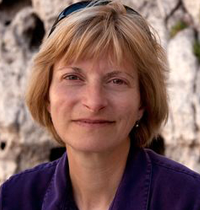NOTE: Images in this archived article have been removed.

The California Aqueduct transports water 700 kilometers from northern California to southern California, including Los Angeles, which ranks first in the world in cross-basin water imports, according to a new study. Photo: Kluft/Wikimedia Commons
As cities grow in population and economic activity, they reach further and further out to find water to meet their needs.
Now, a new
study has estimated that collectively the world’s large cities, defined as those with at least 750,000 people, move 504 billion liters (133 billion gallons) of water a day a cumulative distance of some 27,000 kilometers.
Positioned end to end, the canals and pipelines transporting that water would stretch halfway around the world. The volume transferred annually is equivalent to the yearly flow of 10 Colorado Rivers.
Many large cities tap supplies not only in their own watersheds, but also in others far afield.
Los Angeles, California, with imports of 8.9 billion liters per day from distant rivers, ranks first in the world in cross-basin water transfers, according to the study, published this week in the journal Global Environmental Change. The city diverts water hundreds of kilometers from the Colorado River Basin, as well as from rivers in central and northern California, to satisfy the demands of its 13.2 million people.
After Los Angeles, Boston (USA), Mumbai (India), Karachi (Pakistan), and Hong Kong round out the top five large cities that import the most water from watersheds other than their own.
Large cities occupy only 1% of the Earth’s land surface, but the watersheds that provide their water cover 41% of the land surface, underscoring the importance of good land use in maintaining the quality of drinking water.
Led by
Rob McDonald, a senior scientist with
the Nature Conservancy, the research team found that large cities get 78% of their water from rivers, lakes and other surface sources, 20% from groundwater, and 2% from desalination.
The study provides the most detailed assessment to date of urban water sources, and is the first to include inter-basin water transfers.
The Colorado River Aqueduct transfers water from Parker Dam west to the Los Angeles area. Credit: Wikimedia.
These transfers often cause ecological harm in the source watersheds, but they can relieve urban water stress by making more water available to cities.
McDonald and his team estimate that 25% of cities are in conditions of water-stress, compared with estimates from earlier studies of 39%. (For these figures the range is +/- 4%.)
Still, urban water stress – defined in this study as occurring when a city’s water demand equals or exceeds 40% of its available supply – is a large and growing concern.
Nearly $5 trillion of economic activity –about 22% of the total for large cities and some 7% of the global total – takes place in the roughly one-quarter of large cities in water-stressed conditions.
In this way, water stress emerges as a significant risk to economic activity.
The top ten largest cities under water stress, according to the McDonald team, are Tokyo (Japan), Delhi (India), Mexico City (Mexico), Shanghai (China), Beijing (China) Kolkata (India), Los Angeles (United States), Rio de Janeiro (Brazil), Moscow (Russia), and Istanbul (Turkey).
While relatively wealthy cities can keep reaching further out for more water, the environmental, energy, and economic costs of doing so keep rising.
Although the McDonald team does not address demand management as an alternative to supply expansion, water conservation and re-use often hold out the most promising prospect of meeting new urban demands in a cost-effective and environmentally sound way.
Boston, for example, which ranks second in the world in the volume of water imported from other basins, began implementing an aggressive conservation program in the late 1980s as an alternative to building a new diversion from the Connecticut River some 130 kilometers (80 miles) west of the city. Today, greater Boston’s water use
has dropped some 43% from its peak and is back to where it was a half century ago. There is no need for the river diversion.
Many poorer cities, however, are still growing rapidly and do not typically have the financial resources to build the infrastructure needed to meet their rising demands.
For such cities, which include Dhaka (Bangladesh), Kampala (Uganda) and Sana’a (Yemen) the McDonald team concludes, “international aid and investment may be required to maintain adequate urban water supply.”








